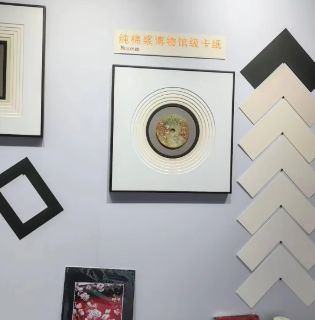Რატომ არის მჟავა-უფრო მატბორდები გაუმჯობესებელი ფოტოსურათების შენახვისთვის
Ყვითლდებისა და დახრომის მეცნიერება (მჟავა წვა 101)
Ქაღალდის დახრომა სინამდვილეში იწყება მაშინ, როდესაც ჩვეულებრივი მჟავა მატბორდში მატბორდები შთანთქავს ჟანგბადს და ტენს. ლიგნინი — ბუნებრივი პოლიმერი ხის გახეხილ და გახეხილ ზეთში — გატეხილია განათის მაღალ დონეზე გოგირდმჟავად, რაც აჩქარებს ნახევარი პროცენტით თესლების დეგრადაციას თვეში ნორმალური გამოფენის პირობებში. ეს "მჟავა წვა" გამოიხატება ყვითელი ლაქებით 3-დან 7 წელში, რომლის pH დონე ქვემოთ არის 5.5-ზე, რაც ადენს განადგურების სიჩქარეს 240%-ით ტოლი მასალების მიმართ (შენახვის მეცნიერების მიმოხილვა 2022). მჟავას გარეშე ალტერნატივები ამ საფრთხეს ამარცხებს კალციუმის კარბონატის ბუფერების გამოყენებით, რაც შენარჩუნებს pH დონეს 7.5-ზე მაღლა.
Შემთხვევის ანალიზი: 1980-იანების გამოცლებული გამონაშვნები მოდერნული არქივის ბეჭდებთან შედარებით
2023 წელს გამოიკვლეს 42 ოჯახის არქივი, რომელიც შეიცავდა 1990 წელზე ადრე დამზადებულ ახალ ამბებს და მოდერნული გიკლე ბეჭდებს. 15 წელიწადში სტანდარტულ მატებში:
- 1980-იანების გამონაშვნებმა აჩვენა pH-ის დაბრუნება 4.1-მდე და ზედაპირის გამუქება 89%
- Მოდერნული ბეჭდები pH 8.5-იან ბამბის მატებში შეინარჩუნა ფერის სისუფთავე 97%
Განსაკუთრებით, მჟავე ზიანის 73% მოხდა "მეორადი მიგრაციის" მიერ მიმდებარე არქიული არა მასალებიდან, რაც ადასტურებს, რომ მჟავას უფრო მაღალი ჩარჩოების გამოყენება აუცილებელია.
Ძირითადი მაჩვენებელი: 98% შენახვის წარმატება pH ≥8.5 მატების დახმარებით
Გრძელვადიანი კვლევები აჩვენებს მატბორდები pH-ის შენარჩუნება 8.5-9.0 არიდებს:
✅ მჟავის გამო ყვითლის 98%
✅ გაყინული ბრტყელის 94%
✅ ლეპის დეგრადაციის 87%
Ეს ტკბილი ნაერთი მტკიცედ არის საჭირო მასალებისთვის, რომლებსაც ახლავთ მჟავიანობა - როგორიცაა ძველი სმინალის ფოტოები - სადაც დაბუფერებულმა დაფებმა ცელულოზის დანაკარგი შეამცირეს წელზე 0.8%-დან 0.1%-მდე (Conservation Metrics 2021).
Დაფების ტიპების გაშიფვრა: სტანდარტულიდან კონსერვაციულ ხარისხამდე
Ფასი და დაცვა: მუზეუმის ხარისხი და 'მჟავას უფრო' მარკეტინგული მოთხოვნები
Მუზეუმის ხარისხის მატბორდი: შედგება ალფა-ცელიულოზისაგან ან 100%-იანი ბამბის ბირთვისაგან, რომელიც არ შეიცავს ლიგნინს და მისი pH მნიშვნელობა 8.5-დან 9.5-მდეა, რაც დაგეხმარებათ თქვენი ნამუშევრის ან ფოტოსურათების დაცვაში და შენარჩუნებაში. ასეთი დაფები შეიძლება შეიცავდეს მჟავას ამortიზაციის ტკიპის ტევადობას (მაგ., კალციუმის კარბონატს), და სტუდიებმა ასეული წელზე მეტი ხნის განმავლობაში დაადასტურა მინიმუმ 98% შენარჩუნებას ფილტვის მასალაში. შედარებისთვის, „მჟავას გარეშე“ არ ნიშნავს ყოველთვის მთლიანად მჟავას გარეშე პროდუქტს, ხშირად ქაღალდის ზედაპირი მხოლოდ მჟავას გარეშე დამუშავებულია, ხოლო ბირთვი ხის ბამბისაგან დამზადებულია, რომელიც შეიცავს ლიგნინს და იწვევს განადგურებას. მიუხედავად იმისა, რომ ბუნებრივად უფრო ძვირია საშენი მატბორდების შედარებით, კონსერვაციის ხარისხის მატბორდები ფასდაუკვეთია, რადგან ისინი აჩერებენ არასაშუალოდ დაზიანებას, როგორიცაა მოხლისფერი ლაქები (მოწითალ-ყავისფერი ლაქები, რომლებიც ცელიულოზის დაშლის შედეგად წარმოიქმნება) და ქიმიურ წვებას ლეპის რეაქციის გამო.
Როდის არის მნიშვნელოვანი ლინოლეუმის გარეშე იყოს თანამედროვე ხელოვნებისთვის და ვინტაჟური ფოტოებისთვის
Ლიგნინისგან თავისუფალი კონსტრუქცია მნიშვნელოვანია დღევანდელი მულტიმედიის მხატვრებისთვის, რომლებიც მუშაობენ მეტალის ფოლგაზე, მეტალის მარკერებზე ან აკრილზე და სხვა წყალ-საფუძველზე დამზადებული საღებავებზე. როდესაც ეს მასალები ურთიერთქმედებენ მჟავა დაფებთან, არასასურველი რეაქციები ხდება, რაც იწვევს 5–7 წელში კოროზიულ დაზიანებას ან ფერის შეცვლას. მეორე მხრივ, ძველი ფოტოსურათები ვულნერაბელია როგორც ლიგნინის მჟავების, ასევე ტუტე ბუფერული აგენტების მიმართ – მაღალი pH მნიშვნელობის მქონე დაფები იწვევს გელატინის ემულსიის დეგრადაციის აჩქარებას 1980 წელზე ადრე დაბეჭდილ ეგზემპლარებში. მემკვიდრეობის შესანახად აირჩიეთ ბუფერული აგენტების გარეშე ლიგნინისგან თავისუფალი დაფა მჟავას მიმართ და მისი pH-ნეიტრალური ბირთვით; ხოლო თანამედროვე ხელოვნური ნამუშევრებისთვის შეიძლება გამოვიყენოთ ბუფერული - ლიგნინისგან თავისუფალი დაფა, რომელიც აბათილებს მჟავა ატმოსფერულ მასალებს გარემოს ტუტე გახდომის გარეშე.

Მასალის შემადგენლობის დაშლა: ფენა, ბირთვი და ზედაპირის ტექსტურა
4-ფენიანი vs 8-ფენიანი: როგორ აისახება სისქე ჩაქუჩის დისპლეებზე
Ფიზიკური სტაბილურობა მრავალშრიანი ჩარჩოს დამაგრებისას განის სისქეზეა დამოკიდებული. ეს სერვისი ქვეყნის მასშტაბით ხელმისაწვდომია, თუმცა თავად ჩარჩოს დამზადებას შეძლებთ 4-ფილიანი (0.040 დიუმი) გამოყენებით, რათა სტანდარტული ჩარჩოს დამაგრების ხარჯები შეამციროთ, ხოლო რამე მძიმის ჩამოსვლის შემთხვევაში (მედლები ან ტექსტილი), გირჩევთ 8-ფილიანი დაფების (0.080 დიუმი) გამოყენებას საშუალებრივი სიღრმის შესაქმნელად. 2023 წელს გამძლეობის შესახებ კვლევამ აჩვენა, რომ 8 ფილიანი ვარიანტი 55% ფარდობით ნორმალური ტენიანობის პირობებში 62%-ით ნაკლებს უზრუნველყოფს დახრას ვიდრე სტანდარტული სისქე.
Მოძრავი ნამუშევრისთვის, 4-ფილიანი უზრუნველყოფს ნათელ სიღრმეს, თუმცა იმ კოლექციონერებისთვის, ვინც სიგრძის პრიორიტეტს ანიჭებს, გირჩევთ 8-ფილიანის ჟანგვის მიმართ მეტ მდგრად კიდეებს. სქელი დაფები უკეთ იზოლირებენ დამაბინძურებელ ნივთიერებებს არაკონტროლირებულ გარემოში, სადაც 0.5 მმ ჰაერის ბარიერი 73%-ით უფრო ეფექტუალურია სტანდარტული სპეისერებთან შედარებით.
Ბამბის ბადის ბირთვი და ხის ბამბის შედარება: სითბოს/ტენიანობის გამო დახრის ტესტები
Მასალის ბირთვები განსაზღვრავს გარემოს მოწყვეტილობის ქვეშ დამახასიათებელ დამუშაობას. აჩქარებული გაძველების ტესტები წამყვანი კონსერვაციის ლაბორატორიების მიერ აჩვენებს:
| Ბაზის მასალა | Გადახრა 85°F/70% RH-ზე (30 დღე) | pH სტაბილურობა (5 წელიწადში) |
|---|---|---|
| Საქანელი ბამბა | <2% დეფორმაცია | 8.5 → 8.4 |
| Ხის პულპი | 45% იატაკის აწევა | 7.2 → 6.1 |
Ბამბის ლიგნინისგან თავისუფალი ცელულოზა წინააღმდეგობას უწევს ტენის შთანთქმას, რაც აუცილებელია სანაპირო დისპლეებისთვის, სადაც მარილის აეროზოლები აჩქარებენ განადგურებას . მიუხედავად „მჟავას გარეშე“ ზედაპირის დამუშავებისა, ხის ფოლგები გამოყოფენ მავნე ორგანულ ნივთიერებებს (VOC) 75°F-ზე მაღალ ტემპერატურაზე - ეს არის მნიშვნელოვანი მიზეზი 2021 წლის შენახვის აუდიტის მიხედვით მუზეუმის სესხის 78% ჩაშლილი შემოწმების შემთხვევაში.
Კონკრეტული გამოყენების შერჩევის მატრიცა
Სწორი მატერიალის არჩევა მოითხოვს მასალის თვისებების შესაბამისობას გარემოს მოთხოვნებთან. ერთი ზომის მიდგომა საფრთხეში აქვევს გამწვანებას, დეფორმაციას ან ქიმიურ რეაქციებს, რაც ხელს უშლის ნამუშევრების შენახვას დროის განმავლობაში. ქვემოთ განვიხილავთ სამ კონკრეტულ შემთხვევას, სადაც მასალების ინჟინერია განსხვავებულ შედეგებს იძლევა.
Შავ-თეთრი ფოტოგრაფია: ბუფერული და არაბუფერული მატები
B&W ამაღლებები ვერცხლის ჰალოგენიდებით მოითხოვს დამაგრებულ მატის და კალციუმის კარბონატის მარაგებს. ისინი შენარჩუნებენ ტუტე მჟავიანობას pH=8,5, რაც აბლოკირებს ჰაერში არსებულ მჟავებს იმის პირაბად ყვითლისა და ყავისფერი ლაქების წარმოქმნისა (გამჟავების) შესახებ. დაუმაგრებელი და მასალა! რომელიც თუმცა თავდაპირველად მჟავის გარეშეა, არ შეიცავს ამ დამცავ ტუტეობას, უზრუნველყოფს მჟავე დამალებელი საშუალებების გელატინის ემულსიის დახრომას 15 წელზე ნაკლებ დროში (გამოსახულების შენარჩუნების ინსტიტუტი, 2023). კოლექციონერული პორტრეტებისთვის, 4-ფენიანი ბამბის ქაღალდი დამაგრებულია (ტუტის მარაგი) pH-ით დაახლოებით 8,5 (დაუმაგრებელი ქაღალდის ფენები შეიძლება იყოს 6,5-მდე და მჟავიანი მატის ქაღალდები შეიძლება იყოს 3-5 დიაპაზონში).
Ნარევი მედია ხელოვნება: ანტისტატიკური დამუშავება მეტალის ფოლგებისთვის
Მეტალის ფოროები და ფოლგის აქცენტები ითვლიან სტატიკურ მუხტს ჰაერის გარკვეული მიმართულებით, რაც მიიზიდებს მტვარს, რომელიც აზიანებს ზედაპირებს გასუფთავების დროს. წამყვანი კონსერვაციის ლაბორატორიები მიუთითებენ მატის დაფებზე:
- Ნანგრევის შემცველი ბირთვები (წინაღობა <10³ Ω/sq)
- Მიკრობიჭვის ზედაპირული ფენები (ტრიბოელექტრული მუხტი ≤2 კვ)
- Იონური ზედაპირული გარსები, რომლებიც აბათილებს არსებულ მუხტებს
2022 წელს გეტის მუზეუმის მიერ ჩატარებულმა კვლევამ აჩვენა, რომ ასეთი დამუშავება ნახევარი ნაკლებით ამცირებს ნამცხვრის მიმაგრებას დაუმუშავებელ დაფებთან შედარებით, რაც მნიშვნელოვანია ნაზი მინის ფოლგის მოტივების შესანახად.
Გარე დისპლეები: UV-წინაღობის მქონე საშენი მასალები სტანდარტული ზედაპირული გარსების წინააღმდეგ
Მატის დაფები განიკურნებიან 5-ჯერ უფრო სწრაფად, როდესაც განათებულ სივრცეში არიან განთავსებული ლიგნინის გამო, რომელიც ბზარს უფრო სწრაფად იწვევს ულტრაიისფერი სხივების მოქმედებით. UV-წინაღობის მქონე აკრილის საშენი მასალები დაფის გამუქების შეჩერების მიზნით 99% დაცვას უზრუნველყოფს ზიანის მიყენებული UV-სხივებისგან დაფის სიცოცხლის გასაგრძელებლად 10+ წელზე, ნაცვლად 2 წელზე. გალერეის ფანჯრების ან მზიანი სარდაფებისთვის მოითხოვეთ მატის დაფები ოპტიკური გამუქების ინჰიბიტორებით, რომლებიც აშლას უშლის ყვითლობას - ნიშნის, რომელიც უმეტეს მუზეუმის სტანდარტში გვხვდება, მაგრამ რომელიც არ არის შექმნილი როგორც UV-წინაღობის მქონე.
Მატის დაფის მთლიანობაზე მოჭრის ტექნიკის დამალული ზემოქმედება
Ბეველის კუთხის სიზუსტე: შედარება 45° და 60° კიდეების შენარჩუნებაში
45° დახრილი ზოლი კვლავ მატრასის ინდუსტრიის სტანდარტია, გაჭრილი წებოვანი კიდე თქვენი ნამუშევრის დიზაინში არ გამოიწვევს დაძაბულობას. 60° დახრილი ზოლის გაჭრის შემთხვევაში, მაგრამ, 8-ფენიან მატრასებში გამოიჩნდა 22%-ით უკეთ კიდის შენარჩუნება გარემოს ციკლურ გამოცდაში, ვინაიდან კუთხე ზედაპირის გასწვრივ იმაღლდება, უფრო მკვეთრი დახრილობა მიუთითებს ნაკლებ მასალაზე, რომელიც გარემოს არის წარმოდგენილი. 45° კუთხით გაჭრა შეიძლება გამოწვევს მიკროტრიალებას მყიფე ბიწვის ბამბის ბიჭვში, თელი 60° ისტორიებში საჭიროა ზუსტი ვერცხლის გზის დაკვირვება სამარხის ჩარჩოებზე ხვრელების თანაბარი განაწილების თავიდან ასაცილებლად. პროფესიულ ჩარჩოებში გამოყენებული ციფრული მატრასის მამრღველები ახერხებენ ±1° კუთხის სიზუსტეს ხელით გაკეთებული ინსტრუმენტების ±5°-სთან შედარებით - ეს მნიშვნელოვანია კონსერვაციის ხარისხის მასალებისთვის.
Ლაზერული ჭრის გამჟღავნება: ან განადგურებს თუ არა მჟავას თავისუფალ თვისებებს?
48 საათიანი ლაზერული ჭრის შედეგად ლოკალურად გამავალი ტემპერატურა იზრდება 300°F (149°C)-ზე მეტად, რაც ხე-ტელის მატრიცული დაფების მჟავას გადაადგილების სიჩქარის გაზრდას უწყობს ჭრის წაკეთებიდან 2 მმ სიღრმეში. მესამე მხარის ტესტირებამ აჩვენა, რომ ხელით დაჭრილთან შედარებით ლაზერით დაჭრილი ლიგნინისგან გათავისუფლებული ბირთვების pH-ის მნიშვნელობა შემცირდა 0.8-ით. ულტრაიისფერის გამძლე საფარი ამცირებს ზედაპირის გამუქებას, თუმცა არ აჩერებს ქვემოთ მდებარე ცელულოზის დეგრადაციას. მომთხოვნი გამოყენებებისთვის, როგორიცაა ძველი ფოტოების მონტაჟი, მასალის დაჭრისას როტაციული ბრტყელის გამოყენება ნიშნავს მასალის დეგრადაციის არ არსებობას – 2023 წელს ჩატარებულმა შენახვის კვლევამ აჩვენა, რომ ბრტყელების გამოყენებისას ჭრის კიდეებზე ცვლილება მხოლოდ 3% იყო, ლაზერით დაჭრილი დაფების 18%-ის მაგივრად, სიმულირებული 10 წელიწადიანი ასაკის შემდეგ.
Შემოწმების პროტოკოლი: თქვენი მატრიცული დაფის მჟავასგან თავისუფლების შემოწმება
Ხელით შესრულებული pH ინდიკატორული საცდელი ზოლების ტესტირება პროფესიონალურ აჩქარებული გამოშრობის ანგარიშებთან შედარებით
Მჟავებისგან თავისუფალი მატების ნამდვილი შენახვის დასადასტურებლად, საჭიროა გამოიყენოთ pH ტესტი ან მატები სცენარულად დაუშვათ ტესტირება. pH ზოლები ხელმისაწვდომ ვარიანტს წარმოადგენს $15–$25-ის დიაპაზონში, თუმცა ისინი ზუსტი არ არის — ისინი მხოლოდ ზედაპირის მჟავიანობაზე აძლევს ინფორმაციას, უგულვებედ იტოვებს ღერძებში არსებულ მჟავებს, რომლებიც "სანდვიჩ-სტილის" დაფებთან ერთად გამოიყენება. 2023 წელს არქივის მასალების შესახებ კვლევაში მომხმარებლის დონის pH ზოლების 22%-მა ზედაპირის pH-ის არასწორი მაჩვენებელი გასცა ≥0.5 ერთეულით. პროფესიონალური აჩქარებული გახანგრძლივების ტესტები 85°F/70% RH-ზე 96 საათის განმავლობაში ასრულდება, რაც 50 წელზე მეტ დეგრადაციას ანასხს უკეთებს. თითოეული ანალიზის ღირებულება დაახლოებით $150–$300-ია, ეს ტესტები განსაზღვრავს იმას, არის თუ არა დაფების pH ≥8.5 გარემოს სტრესის შემდეგ, რაც მასალის სიცოცხლისუნარიანობის მთავარ ინდიკატორს წარმოადგენს საუკუნის განმავლობაში.
Წითელი დროშა: მჟავისგან თავისუფალი ზედაპირის' მოწყობილი რეკლამა
Მატრიცული დაფების შესახებ ყურადღებით იხილეთ მხოლოდ იმ ნივთები, რომლებზეც მოჭრილია „ზედაპირი მჟავა-უფრო“ დამწერლობა – ეს გულისხმობს, რომ მწარმოებლებმა სტანდარტული ხის ბოძის ბირთვი დააფარეს ტუტე ფენებით. ასეთი დაფების შესახებ ინდუსტრიული ტესტირების მიხედვით, 18 თვის განმავლობაში ლიგნინის დეგრადაციის შედეგად ბირთვში მჟავა მინარევების 67% (pH ≤6.2) შეიცავს. შენიშვნა: ავთენტური კონსერვატიული დანიშნულების მატრიცული დაფა უნდა მიუთითოს „ლიგნინის გარეშე სრულად“ და უნდა იყენებდეს მხოლოდ ალფა-ცელულოზის ბირთვს, ან ბირთვს, რომელიც დაფის შესახებ აღნიშნულია როგორც მჟავა-უფრო. მოითხოვეთ მესამე მხარის სერტიფიკაციები, როგორიცაა ISO 9706, სადაც pH მდგრადობა უნდა იყოს ≥7.5 100 წელზე. ყოველთვის გაზომეთ pH ზედაპირზე და ბირთვში, რადგან მჟავა ბირთვი შეიძლება გადახრჩომოს დამცავი ფენებს სიტენიან პირობებში.
Ხშირად დასმული კითხვების განყოფილება
Რა იწვევს ფოტოსურათების მოყვითალობას მატრიცულ დაფებში? Მოყვითალობა, რომელიც ცნობილია როგორც „მჟავა წვა“, გამოწვეულია მჟავა მატრიცული დაფების ლიგნინის დაშლის შედეგად მიღებული გოგირდმჟავის მიერ, განსაკუთრებით სინათლის ზემოქმედების პირობებში.
Ნამდვილად არის თუ არა ყველა „მჟავა-უფრო“ მატრიცული დაფა მჟავა-გარეშე? Არა აუცილებლად. ზოგიერთი "მჟავას გარეშე" ნიშნული ნიშნავს მხოლოდ ზედაპირის დამუშაობას, ხოლო ბირთვი რჩება მჟავაში. ნამდვილად მჟავას გარეშე დარწმუნებისთვის მოძებნეთ "ლიგნინის გარეშე".
Რატომ არის მნიშვნელოვანი pH დონე მატის დაფებში? Მატის დაფები pH დონით 7,5-ზე მაღლა უზრუნველყოფს მჟავების ნეიტრალიზებას და არიდებს მასალის მოყვითალებას და დროთა განმავლობაში დასუსტებას, რითაც ინახება შიგნით არსებული ნამუშევარი ან ფოტო.
Როგორ შეიძლება მატის დაფის მჟავას გარეშე მდგომარეობის შემოწმება? Შეგიძლიათ გამოიყენოთ ხელით დამზადებული pH ზოლები, მიუხედავად იმისა, რომ ისინი შეიძლება ნაკლებად ზუსტი იყოს. პროფესიონალური აჩქარებული გამოხატვის ტესტები მატის დაფის მჟავიანობის უფრო ზუსტ შეფასებას სთავაზობენ.
Შინაარსის ცხრილი
- Რატომ არის მჟავა-უფრო მატბორდები გაუმჯობესებელი ფოტოსურათების შენახვისთვის
- Დაფების ტიპების გაშიფვრა: სტანდარტულიდან კონსერვაციულ ხარისხამდე
- Მასალის შემადგენლობის დაშლა: ფენა, ბირთვი და ზედაპირის ტექსტურა
- Კონკრეტული გამოყენების შერჩევის მატრიცა
- Მატის დაფის მთლიანობაზე მოჭრის ტექნიკის დამალული ზემოქმედება
- Შემოწმების პროტოკოლი: თქვენი მატრიცული დაფის მჟავასგან თავისუფლების შემოწმება
- Ხშირად დასმული კითხვების განყოფილება

